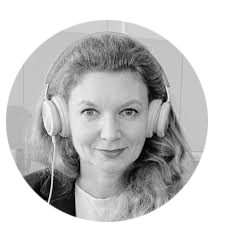
Tutorial: Building interoperable location-based augmented reality with the Open AR Cloud
SUNDAY, OCT. 12, 14:30-18:00 (EEST),
Aalto University (Undergraduate Centre), Finland
Room: U7
Gain knowledge about the technology stack of a spatial web required for interoperable publishing, discovery and consumption of content anchored to a ‘digital twin’ of real-world locations and how it relates to other technologies such as 5G, edge computing and smart sensors.
The schedule is planned for 3.5 hours (including a coffee break) with the following session.
Missed the Tutorial session?
Access the presentation decks, all the code, and example videos through
Tutorial Session Teaser, moder videos on YouTube
Tutorial Abstract:
This tutorial provides an overview of location-based augmented reality (AR), the AR cloud, and the spatial Web. We present the required technological building blocks, use cases, the ecosystem, and challenges related to the lack of interoperability between proprietary solutions.
The Open AR Cloud association promotes an open spatial Web and develops open-source components to achieve this goal. Participants of this tutorial will learn about these open components and gain access to a toolset for building their own augmented reality experiences anchored to the real world.
Welcome & introduction (5 min): Welcome from the organisers. (Gábor Sörös, Alina Kadlubsky)
Spatial Web basics (10 min): Vision, state of the art, applications, challenges. (Jan-Erik Vinje)
GeoPose (15 min): Pose reference systems, the OGC GeoPose standard for a universal shared reference frame between different AR clouds (Gábor Sörös)
An open spatial computing platform introduction (10 min): Required technological building blocks, overview of the Open AR Cloud
Visual positioning (45 min): Visual positioning systems (VPS), technology principles, example walkthrough of creating a 3D point cloud map of a real-world location. OARC GeoPoseProtocol for interoperability between various VPS-es. We will showcase interoperability between the solutions of Immersal and Augmented City, as well as Nokia's OpenVPS.
Intro - (10 min) (Gábor Sörös)
Fully Open Source Visual Positioning System (Open VPS) (15 min) (Gábor Sörös)
Immersal (10 min) (Mikko Karvonen)
Augmented City (10 min) (Katherina Ufnarovskaia)Globe viewer and POI service (15 min): A Cesium-based visualiser that uses Google Earth’s models for buildings, terrain and surface of the globe. (Gábor Sörös)
Coffee break (30 min) (invite the audience to join us, showcasing the demo outside on the Aalto Campus
Spatial Discovery and platform components (20 mins): We provide an overview of the platform and its components, spatial search and spatial discovery, content authoring, content placement, and positioning basics. (James Jackson)
Client applications (30 mins): We have a WebXR-based and a Unity-based client. In this hands-on tutorial, we focus on WebXR, which is free for everyone and can run in a browser without installation. We show the client architecture and how it can be modified and extended for our own experiments. (Gábor Sörös)
Content interoperability (10 mins): Available content types, content authoring and placement, point of interest (PoI) service, OGC PoI standard. A demonstration (video) of interoperable content placement between a Unity client (MyGeoVerse by XR-Masters) and a WebXR client (spARcl by OARC). (Ali Hantal)
Reality modeling system (15 mins): Machine-readable digital representations of the world, reality modeling language (RML), and use cases. (Mikel Salazar)
Outlook and wrap-up (10 mins) (Alina Kadlubsky, Gábor Sörös)
Organisers: The organiser team consists of experts with diverse backgrounds from augmented reality, virtual reality, telecommunications, arts, and communications, involved in industries or academia.
Gábor Sörös is a researcher at Nokia Bell Labs (Budapest, Hungary). His research interests span from wearable computer vision and spatial AI over augmented humans, augmented reality, and augmented intelligence in general, often with applications in interaction with robots and smart things. Gábor is a board member and technology lead in the Open AR Cloud EU association and is also engaged in standardisation at ETSI and the Metaverse Standards Forum. Previously, he was an early contributor to 3 successful AR startups at ETH Zurich. Gábor holds a PhD from ETH Zurich in ubiquitous computing.
James Jackson is a Member of Technical Staff at AT&T Labs (Austin, TX, USA), Director of Technology and board member at Open AR Cloud, and co-chair of the Real/Virtual World Integration Working Group at the Metaverse Standards Forum. He has worked in telecom for the past 25 years, building large-scale real-time distributed systems and promoting innovation. James is especially interested in applications of machine perception that improve society, such as self-driving cars and an open interoperable Spatial Web. James received a BSEE from the University of Texas at Austin and an MSCS (AI/ML focus) from Georgia Tech.
Mikel Salazar is a Human-Computer Interaction researcher focusing on the development of advanced 3D User Interfaces for Extended Reality systems. Currently, he is working at the Institute for Energy Technology (Halden, Norway). As the main developer of the GeoPose Sandbox, he writes a simple reference implementation and the associated documentation to enable others to translate them into different languages and build novel interaction techniques on top of them.
Christine Perey is an industry analyst, independent researcher and an outspoken advocate for interoperable Augmented Reality. From 2009 to 2016, she led the grassroots community dedicated to this purpose. She is a member of numerous standards development organisations and co-chairs the IEEE SA P2874 Spatial Web WG, the OGC Points of Interest SWG and the OGC GeoPose SWG. She is the founder of the AR for Enterprise Alliance (AREA), chairs the Research Committee, and leads the AREA Interoperability and Standards Program. Since 2018, she has been a founder of the Open AR Cloud (OARC) association and serves on the governing board. Since 2022, she has been a WG leader, a member of the board of directors and an elected officer of the Metaverse Standards Forum.
Ali C. Hantal is a serial entrepreneur and passionate advocate for interoperability. He is the founder of XR Masters, Co-President of the Open AR Cloud Association, and Adoption Officer for the GeoPose Standards Working Group at the Open Geospatial Consortium (OGC). With a deep commitment to education and emerging technologies, he focuses on advancing XR and spatial computing through open standards and global collaboration. His company, XR Masters, is a U.S.-based XR technology firm behind MyGeoVerse—a platform capable of publishing spatial content in compliance with OGC and OSCP standards. Powered by AR Cloud technology and conversational AI avatars, MyGeoVerse bridges the physical and digital worlds to deliver immersive, context-aware experiences across tourism, education, and retail.
Alina Kadlubsky is a Research Associate at the Department of Virtual Technologies at the Applied Sciences University of Mittweida. She specialises in spatial computing and XR research, leveraging on creating a human-centred interoperable future of computing while contributing to various initiatives, publications and standards. She is a co-founding member of XRSI Europe and a founding board member of the SafeZone e.V. Alina has been leading the EU activities of Open AR Cloud Europe gUG as managing director through EU-funded research projects like NGI Atlantic, NGI Search and the Horizon-funded XR4Human.
Invited speakers:
Mikko Karvonen
CPO, CO-Founder
Immersal
Katherina Ufnarovskaia,
CEO
Augmented City
Jan-Erik Vinje
Co-President
Open AR Cloud Association









